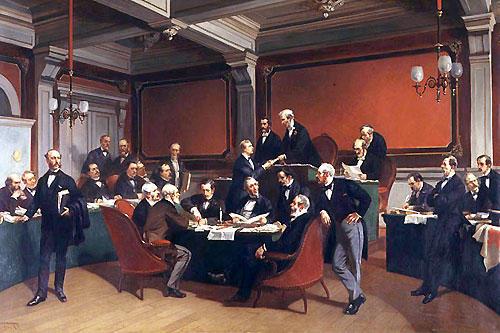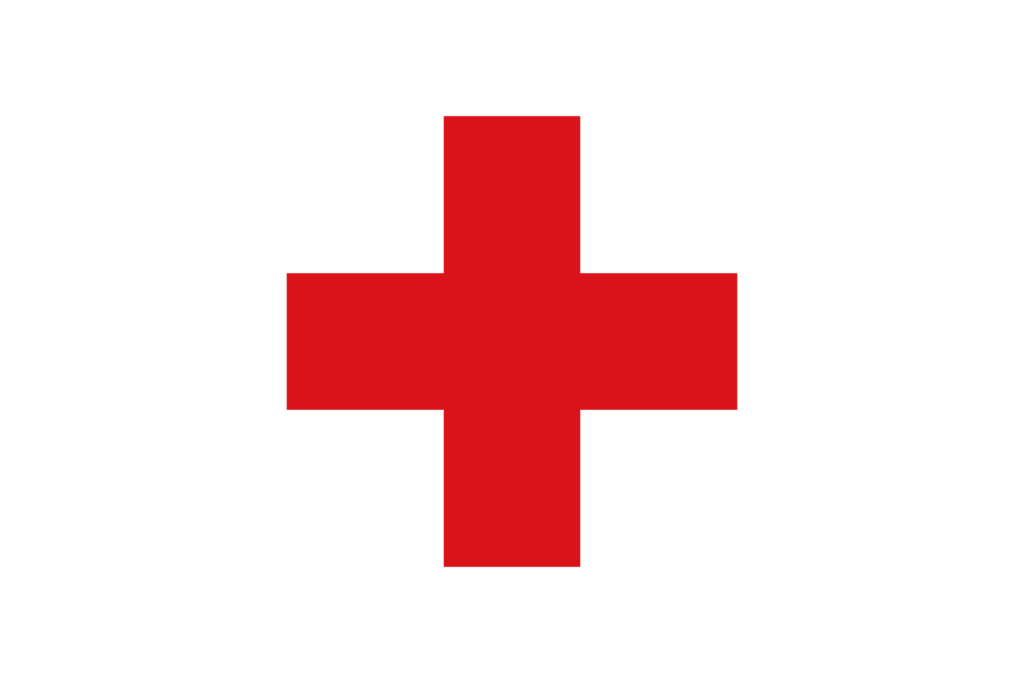Origins in the 19th century
The roots of the Red Cross trace back to the mid-19th century, when Swiss businessman Henry Dunant witnessed the carnage of the Battle of Solferino (1859) in northern Italy. Horrified by the suffering of thousands of wounded soldiers left without care, he mobilised local villagers to assist, regardless of which side the soldiers had fought on. Dunant later published A Memory of Solferino (1862), calling for international agreements to protect the wounded and those caring for them in war.
Illustration of the Battle of Solferino, Italy, June 1859.
This appeal led to the founding of the International Committee of the Red Cross (ICRC) in Geneva in 1863. One year later, on 22 August 1864, representatives of twelve states (including Switzerland, France, Italy, Prussia, Austria, the Netherlands and Spain) signed the First Geneva Convention. This historic treaty established the principles of neutral medical care, the protection of the wounded, and the adoption of the red cross emblem on a white background – a reversal of the Swiss flag – as a symbol of protection.

Development of the movement
The Red Cross rapidly expanded during the late 19th and early 20th centuries. Other countries founded their own national Red Cross societies, working alongside the ICRC. The organisation’s remit grew with the adoption of additional Geneva Conventions, which extended protection to prisoners of war, civilians, and victims of conflict.

Parallel to the Red Cross, the Red Crescent was adopted in the Ottoman Empire and other Muslim-majority countries, while the Red Crystal was later introduced as a neutral emblem. Collectively, these form what is today known as the International Red Cross and Red Crescent Movement – the world’s largest humanitarian network.
The Red Cross today
The modern Red Cross operates through three key components:
- The ICRC – based in Geneva, focusing on humanitarian protection and assistance in armed conflict.
- The International Federation of Red Cross and Red Crescent Societies (IFRC) – coordinating disaster response, development, and health emergencies.
- National Societies – over 190 worldwide, including the British Red Cross, the American Red Cross, and equivalents across Europe, Africa, Asia, and the Americas.
The Red Cross is active in conflict zones, providing aid to refugees, prisoners of war, and victims of violence. It is equally engaged in natural disasters, public health crises, and community services, from emergency response to first aid training.
The British Red Cross
Founded in 1870 during the Franco-Prussian War, the British Red Cross is one of the oldest national societies. Beyond its humanitarian missions abroad, it has a strong domestic presence:
- Running charity shops across the UK, which fund humanitarian work.
- Providing first aid training, emergency response, and community resilience programmes.
- Supporting vulnerable people during crises, such as floods or the Covid-19 pandemic.
Humanitarian principles
The Red Cross operates under seven fundamental principles: humanity, impartiality, neutrality, independence, voluntary service, unity, and universality. These remain the cornerstone of its operations, ensuring aid is delivered to those in need regardless of nationality, race, religion, or political affiliation.
Legacy and continuing role
From its beginnings with twelve signatories in Geneva, the Red Cross has grown into a global network involving nearly every country in the world. It is synonymous with humanitarian action and has played a defining role in shaping international humanitarian law.
Today, whether through its work in war zones, disaster-stricken regions, refugee camps, hospitals, or even its high-street charity shops, the Red Cross continues to embody Henry Dunant’s vision: to alleviate human suffering wherever it is found.
Also read: ON THIS DAY: The link between mosquitoes and malaria is discovered (1897)
For more videos and updates, check out our YouTube channel


